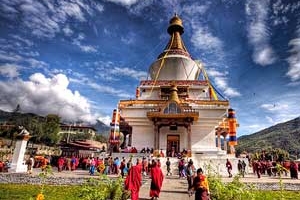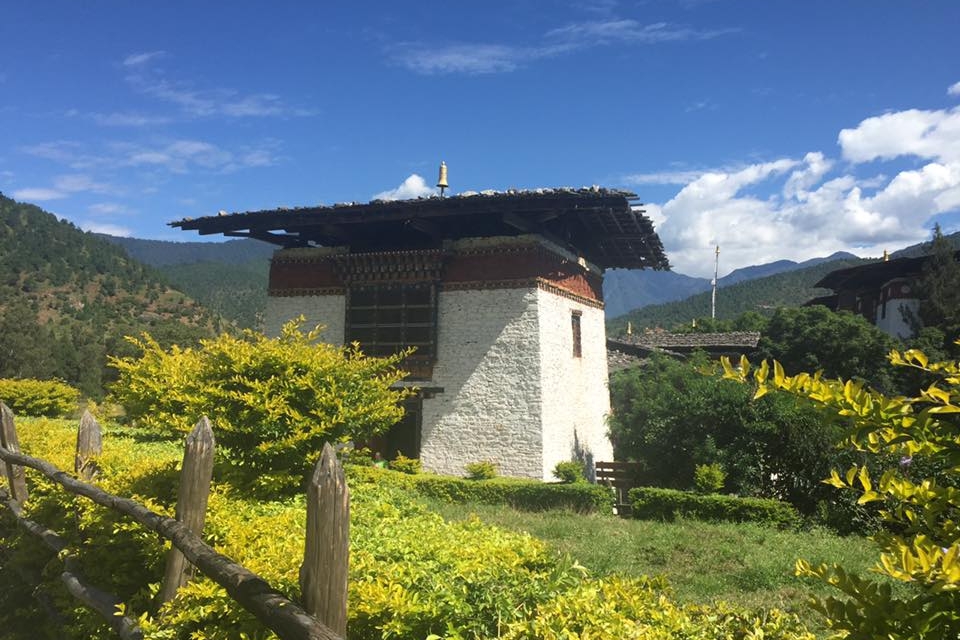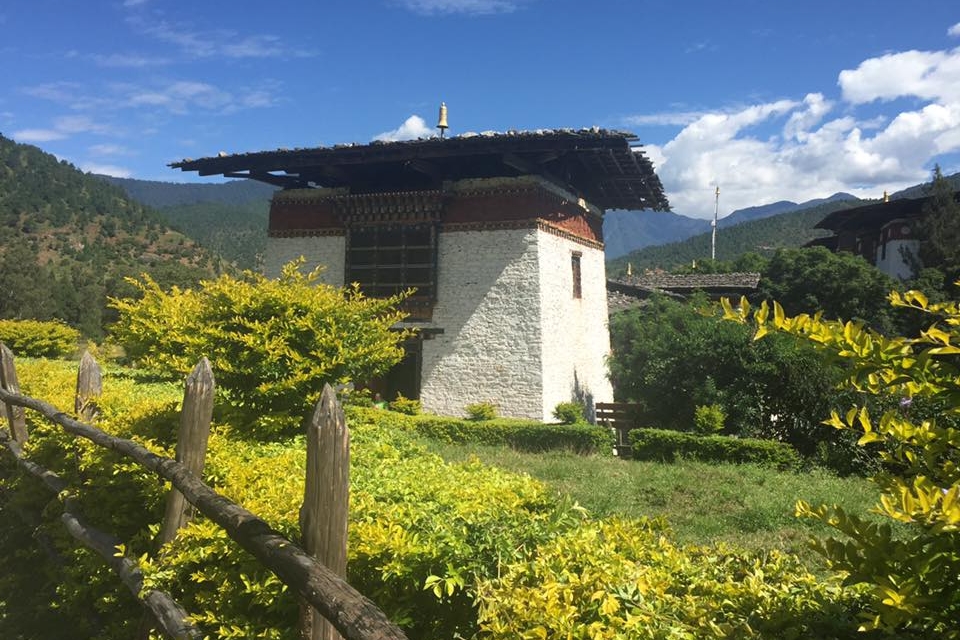Embarking our tour, we fly over to the dragon kingdom Paro. We fly over passing by Mountains of 5500 meters to Paro. Paro is a beautiful valley and is home to many of Bhutan’s oldest monasteries and temples, and the country’s only international airport. The flight to Paro is one of the most spectacular mountain flights in the world, with a constantly changing panorama of some of the highest mountains on earth including Chomolhari and Jitchu Drake peak. Paro Airport has been described as “the most difficult commercial airport in the world”. 1980meter runway length presents a double challenge, due to the extremely low density altitude at the site. So, only a handful of well experienced pilots are certified to operate commercial airplanes here thus, making least number of flights in a day. After immigration and custom formalities, check out from the departure lounge. There you will meet one of the representatives of Nature Trail Travels & Tours, Trekking & Expeditionwho will greet you and then escort you to your respective hotel where you will stay overnight. Before dinner at the hotel there will be an orientation on Bhutanese etiquette by your guide.



On this day, you will have a short hike up to Taktsang monastery. Taktsang is a prominent sacred Buddhist site and temple complex perched on the edge of upper Paro Valley. It is also known as the Tiger’s Nest. This magical monastery clings to a vertical granite cliff 300 meter above the valley. Legend has it that the great Guru Padmasambhava flew to this spot on back of a tigress and meditated in a cave during the 8th century. When the Guru finished his meditation, he instructed that the monastery to be built. The temple was built around the cave and is a hallowed shrine for Bhutanese pilgrims.The spectacular view along the way and the historical sites draw many tourists to this imposing monastery. There are also a number of temples scattered along the route. Later we’ll turn to the Paro Dzong, a large Buddhist monastery and fortress, which is considered the best example of Bhutanese architecture. Now it also houses the district Monastic Body and government administrative offices. On the hill above the Dzong stands an ancient watchtower called Ta Dzong, which is the National Museum of Bhutan. Visit Ta Dzong Museum housing many religious relics, works of art and handicrafts offering a great orientation into Bhutan’s historical, cultural, and religious past.This Dzong was converted into the National Museum in 1968. The museum boasts antique thangkas, textiles, weapons and armor, household objects and rich assortment of natural and historic artifacts.Here you can also learn about Bhutan’s history. After this hike and a short sightseeing tour, we drive to Thimphu following the Pachu River. Once a rustic village sitting in a broad, fertile river valley, Thimphu is today the nation’s bustling capital. We will stay overnight at Thimphu.



After appetizing breakfast, we visit National Memorial Chorten. This temple was first initiated by the Third King as a protection from the negative elements of modernization, and as a monument to world peace. The Royal Queen Mother completed it as a memorial Stupa for the Third King who passed away in 1972. Then we will continue our visit to 12th century Changangkha Temple and Drubthob monastery housing the Zilukha Nunnery. If you want to see Takin, the national animal of Bhutan then you can proceed onto mini-zoo. The Takin (a goat-antelope) was declared the national animal of Bhutan because it is strongly associated with the country’s religious history and mythology. After sightseeing of these sites, if you still have some time left then you can visit to National Library, the priceless collection of Buddhist manuscripts and few English version books; Folk and Heritage Museum, which displays day to day livelihood of typical Bhutanese farmers in medieval period and their accessories; Late King’s Memorial Stupa, built for the world peace and Traditional Handmade Paper Factory; Painting School, which preserves our traditional paintings, sculpturing and wood curving and National Handicraft Emporium, the best place to look for souvenir from Bhutan. You can also visit the Rinpung Dzong, meaning ‘fortress of the heap of jewels’ to see the painting of the great saint Milarepa, considered as the master of meditation by the Bhutanese and believed to have attained enlightenment in a lifetime. The Dzong is now used as an administration center and school for monks. Dzong’s are large monasteries and district administrative centers, which were once strategic forts.Some of the landmarks are closed on the weekend (Saturdays and Sundays). Therefore, if your visit to Thimphu coincides with the weekend, you can walk through the Thimphu Market to see the variety of food of Bhutan, including basket upon basket of fiery chilies, cheese and a variety of greens. (This market is open only from Friday-Sunday).



On the following day, we will be driving to Punakhavia Dochu La Pass (3,100m).Dochu la pass is situated 10,000 feet above sea level. You can have magnificent view of eastern Himalayas from this pass which includes Bhutan’s highest mountain Mount GangkarPunsum (7550 m). From the pass, we drive downhill through the rhododendron, fir and hemlock forests. We then pass through rice fields along river banks and reach Punakha. In Punakha, we visit Punakha Dzong which was built between 1637/1638 and is the second oldest and the second largest Dzong in Bhutan. Overnight in Punakha.



Concluding our trip, today we drive to Paro today after having breakfast. A drive for about four hours will take you to Paro. After arrival, you can spend the rest day by self-exploration or you could also visit some remaining sightseeing spots which you weren’t able to visit before. Stay overnight at Paro.








Discover incredible offers for your upcoming adventure by subscribing to our newsletter with the latest travel tips and updates.
